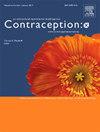"我们只需要尽可能多地创造获取途径":美国南部的临床医生和管理人员对远程医疗药物流产的态度
Q2 Medicine
引用次数: 0
摘要
目标目前,关于南方性健康和生殖健康服务提供者对远程保健堕胎服务的看法的文献尚属空白。本研究旨在探讨这些观点,以了解医疗服务提供者对远程医疗流产重要性和优先性的态度,从而有助于加深对南方医疗服务提供者的了解。研究设计本研究对 "医疗服务提供者对虚拟实施和提供药物流产服务(PROVIDA)的准备情况 "研究的数据进行了二次分析。在 2021 年 6 月至 2022 年 6 月期间进行的一系列深入访谈中,我们收集了 20 名医疗服务提供者对远程医疗流产的重要性和优先性的看法的定性数据。结果我们确定了四大主题:远程健康人工流产在减轻物理、行政、财务和隐私相关障碍方面对患者的益处非常重要;远程健康人工流产在改善诊所流程和可持续性方面对诊所的益处非常重要;政治气候影响个人对远程健康人工流产的优先考虑;员工的犹豫不决影响诊所对远程健康人工流产的优先考虑。我们发现政治气候是影响个人优先考虑远程保健人工流产的最显著因素,大多数参与者指出政治气候降低了远程保健人工流产的优先级。此外,我们的分析还发现,参与者认为工作人员对实施远程保健流产犹豫不决是影响诊所优先级的最显著因素。本研究强调了限制性环境中性健康和生殖健康专业人员的见解,强调了远程健康人工流产在缓解美国南方人工流产寻求者和提供者所面临的独特获取和提供障碍方面的潜力。这对于在堕胎仍然合法但远程保健堕胎被禁止的州推动实施具有重要意义。本文章由计算机程序翻译,如有差异,请以英文原文为准。
“We just need to create as many avenues for access as we possibly can”: Clinician and administrator attitudes toward telehealth medication abortion in the U.S. South
Objectives
There is currently a gap in literature on the perspectives of sexual and reproductive health providers in the South toward telehealth abortion services. This research seeks to explore these perspectives to understand provider attitudes toward importance and priority of telehealth abortion to contribute to the development of a richer understanding of this in the South.
Study design
This study conducts a secondary analysis of data from the Provider Readiness for Virtual Implementation and Delivery of Medication Abortion Services (PROVIDA) study. We collected qualitative data regarding perspectives of 20 providers toward importance and priority of telehealth abortion during a series of in-depth interviews that took place from June 2021–2022.
Results
We identified four main themes: telehealth abortion is important for patient benefit in mitigating physical, administrative, financial, and privacy-related barriers; telehealth abortion is important for clinic benefit in improving clinic flow and sustainability; the political climate affects personal prioritization of telehealth abortion; and staff hesitance affects clinic prioritization of telehealth abortion.
Conclusions
Our analysis revealed telehealth abortion to be particularly important in mitigating physical barriers for patients and for clinic sustainability. We found the political climate to be the most notable factor influencing personal prioritization of telehealth abortion, with most participants noting it made telehealth abortion less of a priority. Additionally, our analysis found participant perception of staff hesitation to implement telehealth abortion to be the most notable factor affecting clinic prioritization. Future research should utilize these findings to inform studies examining the implementation climate of telehealth abortion in the South.
Implications
Highlighting insights from SRH professionals in restrictive environments, this study emphasizes the potential of telehealth abortion to mitigate the unique barriers to access and provision that abortion seekers and providers face in the U.S. South. This has important implications for motivating implementation in states where abortion is still legal but telehealth abortion is prohibited.
求助全文
通过发布文献求助,成功后即可免费获取论文全文。
去求助
来源期刊

Contraception: X
Medicine-Obstetrics and Gynecology
CiteScore
5.10
自引率
0.00%
发文量
17
审稿时长
22 weeks
 求助内容:
求助内容: 应助结果提醒方式:
应助结果提醒方式:


